Thank you for choosing one of our high-quality products.
To ensure optimal and regular performance of your appliance please read this instruction manual carefully. It will enable you to navigate all processes perfectly and most efficiently. To refer to this manual any time you need to, we recommend you to keep it in a safe place. And please pass it to any future owner of the appliance.
We wish you much joy with your new appliance.
CONTENTS
Subject to change without notice
OPERATING INSTRUCTIONS
SAFETY INFORMATION
Read carefully & keep for future reference.
???The safety of Your appliance complies with the industry standards and with legal re- quirements on the safety of appliances. However, as manufacturers, we feel it is our duty to provide the following safety notes.
???It is most important that this instruction book should be retained with the appliance for future reference. Should the appliance be sold or transferred to another owner, or should you move house and leave the appliance, always ensure that the book is supplied with the appliance in order that the new owner can get to know the functioning of the appli- ance and the relevant warnings.
???You MUST read them carefully before installing or using the appliance.
???Before first starting up, check the appliance for any damage incurred during transport. Never connect up a damaged appliance . If parts are damaged, contact your supplier.
???If the appliance is delivered in the winter months when there are minus temperatures. Store it at room temperature for 24 hours before using for the first time.
General safety
4Safety information
???Under no circumstances should you attempt to repair the machine yourself. Repairs car- ried out by inexperienced people may cause injury or serious malfunctioning. Contact your local Service Centre. Always insist on genuine spare parts.
Installation
???This appliance is heavy. Care should be taken when moving it.
???When unpacking the appliance, check that it is not damaged. If in doubt, do not use it and contact the Service Centre.
???All packing and transit bolts must be removed before use. Serious damage can occur to the product and to property if this is not adhered to. See relevant section in the user manual.
???After having installed the appliance, check that it is not standing on the inlet and drain hose and the worktop is not pressing the electrical supply cable against the wall.
???If the machine is situated on a carpeted floor, please adjust the feet in order to allow air to circulate freely under the appliance.
???Always be sure, that there is no water leakage from hoses and their connections after the installation.
???If the appliance is installed in a location subject to frost, please read the ???dangers of freezing??? chapter.
???Any plumbing work required to install this appliance should be carried out by a qualified plumber or competent person.
???Any electrical work required to install this appliance should be carried out by a qualified electrician or competent person.
Use
???This appliance is designed for domestic use. It must not be used for purposes other than those for which it was designed.
???Only wash and dry fabrics which are designed to be machine washed or dried. Follow the instructions on each garment label
???Do not overload the appliance. See the Washing Programme Table.
???Before washing, ensure that all pockets are empty and buttons and zips are fastened. Avoid washing frayed or torn articles and treat stains such as paint, ink, rust, and grass before washing. Underwired bras must NOT be machine washed.
???Garments which have been in contact with volatile petroleum products should not be machine washed. If volatile cleaning fluids are used, care should be taken to ensure that the fluid is removed from the garment before placing in the machine.
???As some duvets and eiderdowns should be washed/dried in large commercial machines because of their bulk, please check with the manufacturer of the item before washing in a domestic machine.
???The users should always check that they have not left their gas lighters (disposable or otherwise) in their clothing.
???Never tumble dry items that have had contact with chemicals such as dry cleaning fluid. These are of a volatile nature and could cause an explosion. Only tumble dry items which have been washed in water or require airing.
???Plastic detergent dispensers should not remain in the drum during the drying cycle, as the plastic used is not designed to withstand the heat. If you wish to wash-through-to- dry you should use the conventional detergent dispenser drawer.
???Never pull the power supply cable to remove the plug from the socket; always take hold of the plug itself.
???Never use your new appliance if the power supply cable, the control panel, the working surface or the base are damaged so that the inside of the appliance is accessible.
Child Safety
???This appliance is not intended for use by person (including children) with reduced physi- cal sensory or mental capabilities or lack of experience and knowledge unless they have been given supervision or instruction concerning use of the appliance by a person re- sponsible for their safety.
???Children should be supervised to ensure that they do not play with the appliance.
???The packaging components (e.g. plastic film, polystyrene) can be dangerous to children - danger of suffocation! Keep them out of children's reach.
???Keep all detergents in a safe place out of children???s reach.
???Make sure that children or pets do not climb inside the drum. To prevent children or pets becoming trapped inside the drum the ma-
chine incorporates a special feature. To acti- vate this device, rotate the button (without pressing it) inside the door clockwise until the groove is horizontal. If necessary use a coin. To disable this device and restore the possibility of closing the door, rotate the button anticlockwise until the groove is ver- tical.
PRODUCT DESCRIPTION
Your new appliance meets all modern requirements for effective treatment of laundry with low water, energy and detergent consumption.
The NEW JET system allows total use of detergent and reduces water consumption so sav- ing energy.
6 Product description
2
1
3
4
5
6
1Detergent dispenser drawer
2Control panel
3Door opening handle
4Rating plate
5Drain pump
6Adjustable feet
Detergent dispenser drawer
 Compartment for detergent used for prewash. The prewash detergent is added at the beginning of the wash programme.
Compartment for detergent used for prewash. The prewash detergent is added at the beginning of the wash programme.
 Compartment for powder or liquid detergent used for main wash. Compartment for liquid additives (fabric softener, starch).
Compartment for powder or liquid detergent used for main wash. Compartment for liquid additives (fabric softener, starch).  Compartment for stain remover used for main wash with STAIN-option.
Compartment for stain remover used for main wash with STAIN-option.
CONTROL PANEL
Below is a picture of the control panel. It shows the programme selector dial as well as the buttons and the display. These are presented by relevant numbers on the following pages.
1Programme selector dial
2SPIN reduction button (CENTRIFUGEREN)
3PREWASH button (VOORWAS)
4STAIN button (VLEKKEN PLUS)
5SENSITIVE button (BEHOEDZAAM)
6TIME SAVING button (TIJD)
7Display
8START/PAUSE button (START/PAUZE)
9DELAY START button (STARTUITSTEL)
10 Indicator pilot lights
TABLE OF SYMBOLS
8
Display (7)
7.17.2
7.3
7.5
7.4
7.1 Child safety lock symbol
7.2
???Duration of selected programme: after selecting a programme, the duration is dis- played in hours and minutes (for example 2.05). The duration is calculated automatically on the basis of the maximum recommended load for each type of fabric. After the pro- gramme has started, the time remaining is updated every minute.
???Alarm codes: in the event of operating problems, some alarm codes can be displayed, for example E20 (see chapter ??What to do if...??).
???End of programme: when the programme has finished a blinking zero  is displayed, the symbol 7.5 (Door locked) disappears on the display, the pilot light of button 8 goes out and the door can be opened.
is displayed, the symbol 7.5 (Door locked) disappears on the display, the pilot light of button 8 goes out and the door can be opened.
???Incorrect option selection: if an option which is not compatible with the set wash pro- gramme is selected, the message Err is displayed for a few seconds and the yellow pilot light of button 8 light starts blinking.
???Delay Start: the selected delay (20 hours max) set by the relevant button appears on the display for a few seconds, then the duration of the previously selected programme is dis- played. The symbol 7.3 will appear on the display. The delay time value decreases by one
unit every hour. When only 1 hour remains, the time decreases every minute.
7.3Delay Start - symbol
7.4Programme progress display: the display shows the different washing programme
phases. After the appliance starts operating, the display show the relevant symbol of the washing phase which is running: 
 = WASHING,
= WASHING,  = RINSING, = DRAINING, = SPINNING - symbols
= RINSING, = DRAINING, = SPINNING - symbols
7.5 Door lock symbol
This symbol indicates if the door can be opened:
???symbol on: the door cannot be opened. The appliance is running or the appliance has stopped with water left in the tub.
???symbol off: the door can be opened. The washing programme is finished.
9
Indicator pilot lights (10)
If the OVERDOSAGE (OVERDOSERING) pilot light10.1 illuminates at the end of the pro- gramme, it indicates that too much detergent has been used.
When the appliance is performing additional rin- ses the EXTRA RINSE (EXTRA SPOELEN) pilot light 10.2 illuminates. To add an additional rinse, please see chapter ??Select an additional rinse??.
FIRST USE
??? Ensure that the electrical and water connections comply with the installation instruc- tions.
???Remove the polystyrene block and any material from the drum.
???Before the first wash, run a cotton cycle at the highest temperature without any laundry in the machine, to remove any manufacturing residue from the drum and tub. Pour 1/2 a measure of detergent into the main wash compartment and start the machine.
PERSONALIZATION
Acoustic signals
The machine is provided with an acoustic device, which sounds in the following cases:
???at the end of the cycle
???in the event of operating problems.
By pressing the 3 and 4 buttons simultaneously for about 6 seconds, the acoustic signal is deactivated (except for the events of operating problems). By pressing these 2 buttons again, the acoustic signal is reactivated.
Child safety lock
This device permits you to leave the appliance unattended and not to worry that children might be injured by or cause damage to the appliance.
This function remains able also when the washing machine is not working. There are two different ways to set this option:
???Before pressing button 8: it will be impossible to start the machine.
???after pressing button 8: it will be impossible to change any other programme or option. To enable or disable this option press simultaneously for about 6 seconds buttons 4 and 5 until the symbol 7.1 appears or disappears on or from the display.
10 Daily use
DAILY USE
Load the laundry
1.Open the door by carefully pulling the door handle outwards. Place the laundry in the drum, one item at a time, shaking them out as much as possible.
2.Close firmly the door. You must hear a click during closing.
WARNING!
Do not embed the laundry between the door and the rubber joint.
Measure out the detergent and the fabric softener
Your new appliance was designed to reduce water, energy and detergent consumption.
1.Pull out the dispenser drawer until it stops. Measure out the amount of deter-
gent required, pour it into the main wash compartment  and, if you wish to carry out the prewash phase, pour the deter- gent into the compartment marked
and, if you wish to carry out the prewash phase, pour the deter- gent into the compartment marked  .
.
If you wish to perform the stain function, pour the stain remover into the compart- ment  marked with an arrow.
marked with an arrow.
Select the required programme by means of programme selector dial (1)
You can choose the right programme for any type of laundry following the descriptions on the washing programme tables (see ??Washing Programmes??).
Turn the programme selector dial to the required programme. The programme selector de- termines the type of washing cycle (e.g. water level, drum movement, number of rinses) and the washing temperature according to the type of laundry.
The pilot light of button 8 starts blinking.
The selector dial can be turned either clockwise or anticlockwise. On position  the pro- gramme is reset and the machine is switched off.
the pro- gramme is reset and the machine is switched off.
At the end of the programme the selector dial must be turned to position  , to switch the machine off.
, to switch the machine off.
If you turn the programme selector dial to another programme when the machine is work- ing, the yellow pilot light of button 8 will blink 3 times and the message Err is displayed on the display to indicate a wrong selection. The machine will not perform the new selected programme.
Select the desired TEMPERATURE (Button 2)
When selecting a programme, the appliance automatically proposes the default tempera- ture provided for that programme.
Press this button repeatedly to increase or decrease the temperature, if you want your laundry to be washed at a temperature different from the one proposed by the washing machine.
By selecting position (Cold) the machine will wash with cold water. To be used for ex- tremely delicate items, such as curtains.
For the maximum and the minimum available wash water temperature, see ??Washing pro- grammes??.
12 Daily use
Select the spin speed (SPIN Reduction) or the RINSE HOLD option (Button 3)
When the required programme has been selected, your appliance automatically proposes the maximum spin speed provided for that programme.
Press this button repeatedly to change the spin speed, if you want your laundry to be spun at a speed different from the one proposed by the washing machine. The relevant light will light up.
RINSE HOLD : by selecting this option the water of the last rinse is not emptied out to prevent the fabrics from creasing. When the programme has finished the display shows a blinking , the symbol 7.5 appears on the display and the pilot light of button8 is off. The door is locked to indicate that the water must be emptied out.
To empty the water out please read chapter ??At the end of the programme??.
Programme option buttons
Depending on the programme, different functions can be combined. These must be selected after choosing the desired programme and before pressing the button 8.
When these buttons are pressed, the corresponding pilot lights come on. When they are pressed again, the pilot lights go out.
If an incorrect option is selected, the in yellow pilot light of the button 8 blinks for 3 times and the Err message appears on the display for some seconds.
For the compatibility among the washing programmes and the options see chapter ??Wash- ing Programmes??.
Select the PREWASH option (Button 4)
Select this option if you wish your laundry to be prewashed at 30??C before the main wash. The Prewash ends with a short spin in programmes for cotton and synthetic fabrics, where- as in the programmes for delicate fabrics the water is only drained.
The relevant light will light up.
Select the STAIN option (Button 5)
Select this option to treat heavily soiled or stained laundry with stain remover (extended main wash with time optimized stain action phase). The relevant light will light up.
This option is not available with a temperature lower than 40??C.
If you wish to perform a programme with the stain option, pour stain remover into stain compartment  marked with an arrow.
marked with an arrow.
Select the TIME SAVING option (Button 6)
This option allows you to modify the washing time, automatically proposed by the appli- ance.
DAILY: by pressing button 6 once, the relative pilot light comes on and the washing dura- tion will be reduced to wash daily soiled laundry.
SUPER QUICK: by pressing button 6 twice the relative pilot light remains lit, the washing duration will be reduced to wash lightly soiled laundry or items that have been used or worn for a short time. On the display will be visualized the decreased washing time.
Select an additional rinse (EXTRA RINSE)
This appliance is designed for saving water. However, for people with a very delicate skin (allergic to detergents) it may be necessary to rinse the laundry using an extra quantity of water.
Press simultaneously buttons 2 and 3 for some seconds: the pilot light 10.2 comes on. This function stays permanently on. To remove it press the same buttons again until the pilot light 10.2 goes off.
Select the START/PAUSE (Button 8)
To start the selected programme, press the button 8, the corresponding red pilot light stops blinking.
The symbols 7.4 and 7.5 appear on the display to indicate that the appliance starts operat- ing and that the door is locked.
To interrupt a programme which is running, press the button 8: the corresponding red pilot light starts blinking.
To restart the programme from the point at which it was interrupted, press the button 8 again. If you have chosen a delayed start with button 9, the machine will begin the count- down. If an incorrect option is selected, the yellow pilot light of the button 8 blinks for 3 times the message Err is displayed for about a few seconds.
Select the DELAY START (Button 9)
Before you start the programme, if you wish to delay the start, press the button repeat- edly, to select the desired delay.
The selected delay time value (up to 20 hours) will appear on the display for a few seconds, then the duration of the programme will appear again.
You must select this option after you have set the programme and before you press the button 8.
The wash programme can be delayed from 30 min - 60 min - 90 min, 2 hours and then by 1 hour up to a maximum of 20 hours by means of this button.
The door will be locked throughout the delay time. If you wish to add laundry in the ma- chine during the delay time you will press button 8 to put the machine in pause. Add the laundry, close the door and press button 8 again.
Selecting the delayed start.
???Select the programme and the required options.
???Select the delay start.
???Press button 8: the appliance starts its hourly countdown. The programme will start after
the selected delay has expired. Cancelling the delayed start
???Set the washing machine to PAUSE by pressing the button 8;
???Press button 9 once until the symbol  ??? is displayed;
??? is displayed;
???Press the button 8 again to start the programme.
The selected delay can be changed only after selecting the washing programme again.
The Delay Start can not be selected with the draining programme.
14 Daily use
Altering an option or a running programme
It is possible to change some options before the programme carries them out. Before you make any change, you must pause the washing machine by pressing the button 8. Changing a running programme is possible only by resetting it. Turn the programme se-
lector dial to  and then to the new programme position. Start the new programme by pressing the 8 button again. The washing water in the tub will not emptied out.
and then to the new programme position. Start the new programme by pressing the 8 button again. The washing water in the tub will not emptied out.
Interrupting a programme
Press the button 8 to interrupt a programme which is running, the corresponding light starts blinking. Press the button again to restart the programme.
Cancelling a programme
Turn the selector dial to  to cancel a programme which is running. Now you can select a new programme.
to cancel a programme which is running. Now you can select a new programme.
Opening the door after the programme has started
When the machine is working and through the delay time, the door is locked. If, for any reason, it is necessary to open it, set firstly the machine to pause by pressing the button 8. If the symbol 7.5 goes off, the door can be opened.
If the symbol 7.5 stays on and the door remains locked, this means that the machine is already heating or that the water level is too high. In this case the door can not be opened. If you cannot open the door but you need to open it you have to switch the machine off by turning the selector dial to  . After a few minutes the door can be opened (pay atten- tion to the water level and temperature !).
. After a few minutes the door can be opened (pay atten- tion to the water level and temperature !).
After closing the door, it is necessary to select the programme and options again and to press button 8.
At the end of the programme
The machine stops automatically, the pilot light of button 8 and the symbol 7.5 go off. A blinking  will appear on the display. Some acoustic signals sound. The door can be opened. If a programme or an option that ends with water left in the tub has been selected, a blink- ing
will appear on the display. Some acoustic signals sound. The door can be opened. If a programme or an option that ends with water left in the tub has been selected, a blink- ing  will appear on the display, the pilot light of button 8 goes off and the door remains locked to indicate that the water must be emptied out before opening the door.
will appear on the display, the pilot light of button 8 goes off and the door remains locked to indicate that the water must be emptied out before opening the door.
Follow the below instructions to empty out the water:
???Turn the programme selector dial to 
???Select the draining or spinning programme
???Reduce the spin speed, if needed, by pressing the relevant button
???Press button 8 to start the programme
???When the programme has finished the display shows a blinking . When the symbol 7.5
goes off, the door can be opened.
Turn the programme selector dial to  to switch the machine off. Remove the laundry from the drum and carefully check that the drum is empty. If you do not intend to carry out another wash, close the water tap. Leave the door open to prevent the formation of mildew and unpleasant smells.
to switch the machine off. Remove the laundry from the drum and carefully check that the drum is empty. If you do not intend to carry out another wash, close the water tap. Leave the door open to prevent the formation of mildew and unpleasant smells.
15
Stand by : once the programme has finished after a few minutes the energy saving system will be enabled. The brightness of the display is reduced. By pressing any button the appli- ance will come out of the energy saving status.
WASHING PROGRAMMES
 = OFF
= OFF
For cancelling the programme which is running or to switch the machine off .
1)If you select the Super Quick option by pressing button 6, we recommend that you reduce the maximum load as indicated. Full loading is possible however with somewhat reduced cleaning results.
2)If using liquid detergents, a programme without prewash must be selected.
3)Stain option can be selected only at the temperature of 40??C or higher.
HELPFUL HINTS AND TIPS
Sorting out the laundry
Follow the wash code symbols on each garment label and the manufacturer???s washing in- structions. Sort the laundry as follows: whites, coloureds, synthetics, delicates, woollens.
Temperatures
Before loading the laundry
Never wash whites and coloureds together. Whites may lose their ??whiteness?? in the wash. New coloured items may run in the first wash; they should therefore be washed separately the first time.
Make sure that no metal objects are left in the laundry (e.g. hair clips, safety pins, pins).
Button up pillowcases, close zip fasteners, hooks and poppers. Tie any belts or long tapes. Remove persistent stains before washing.
Rub particularly soiled areas with a special detergent or detergent paste.

20 Helpful hints and tips
Treat curtains with special care. Remove hooks or tie them up in a bag or net.
Maximum loads
Recommended loads are indicated in the washing programme charts.
General rules:
???Cotton, linen: drum full but not too tightly packed;
???Synthetics: drum no more than half full;
???Delicate fabrics and woollens: drum no more than one third full.
Washing a maximum load makes the most efficient use of water and energy. For heavily soiled laundry, reduce the load size.
Laundry weights
The following weights are indicative:
The following weights are indicative:
Removing stains
Stubborn stains may not be removed by just water and detergent. It is therefore advisable to treat them prior to washing.
Blood: treat fresh stains with cold water. For dried stains, soak overnight in water with a special detergent then rub in the soap and water.
Oil based paint: moisten with benzine stain remover, lay the garment on a soft cloth and dab the stain; treat several times.
Dried grease stains: moisten with turpentine, lay the garment on a soft surface and dab the stain with the fingertips and a cotton cloth.
Rust: oxalic acid dissolved in hot water or a rust removing product used cold. Be careful with rust stains which are not recent since the cellulose structure will already have been damaged and the fabric tends to hole.
Mould stains: treat with bleach, rinse well (whites and fast coloureds only).
Grass: soap lightly and treat with bleach (whites and fast coloureds only).
Ball point pen and glue: moisten with acetone1), lay the garment on a soft cloth and dab the stain.
Lipstick: moisten with acetone as above, then treat stains with methylated spirits. Treat any residual marks with bleach.
Red wine: soak in water and detergent, rinse and treat with acetic or citric acid, then rinse. Treat any residual marks with bleach.
1) do not use acetone on artificial silk

Ink: depending on the type of ink, moisten the fabric first with acetone1), then with acetic acid; treat any residual marks on white fabrics with bleach and then rinse thoroughly.
Tar stains: first treat with stain remover, methylated spirits or benzine, then rub with de- tergent paste.
Detergents and additives
Good washing results also depend on the choice of detergent and use of the correct quan- tities to avoid waste and protect the environment.
Although biodegradable, detergents contain substances which, in large quantities, can up- set the delicate balance of nature.
The choice of detergent will depend on the type of fabric (delicates, woollens, cottons, etc.), the colour, washing temperature and degree of soiling.
All commonly available washing machine detergents may be used in this appliance:
???powder detergents for all types of fabric
???powder detergents for delicate fabrics (60??C max) and woollens
???liquid detergents, preferably for low temperature wash programmes (60??C max) for all types of fabric, or special for woollens only.
The detergent and any additives must be placed in the appropriate compartments of the dispenser drawer before starting the wash programme.
If using liquid detergents, a programme without prewash must be selected.
Your appliance incorporates a recirculation system which allows an optimal use of the con- centrated detergent.
Follow the product manufacturer???s recommendations on quantities to use and do not ex- ceed the ??MAX?? mark in the detergent dispenser drawer.
Degrees of water hardness
Water hardness is classified in so-called ???degrees??? of hardness. Information on hardness of the water in your area can be obtained from the relevant water supply company, or from your local authority.
A water softener must be added when water has a medium-high degree of hardness (from degree of hardness II). Follow the manufacturer???s instructions. The quantity of detergent can then always be adjusted to degree of hardness I (= soft).
CARE AND CLEANING
You must DISCONNECT the appliance from the electricity supply, before you can carry out any cleaning or maintenance work.
22 Care and cleaning
Descaling
The water we use normally contains lime. It is a good idea to periodically use a water soft- ening powder in the machine. Do this separately from any laundry washing, and according to the softening powder manufacturer's instructions. This will help to prevent the forma- tion of lime deposits.
After each wash
Leave the door open for a while. This helps to prevent mould and stagnant smells forming inside the appliance. Keeping the door open after a wash will also help to preserve the door seal.
Maintenance wash
With the use of low temperature washes it is possible to get a build up of residues inside the drum.
We recommend that a maintenance wash be performed on a regular basis. To run a maintenance wash:
???The drum should be empty of laundry.
???Select the hottest cotton wash programme.
???Use a normal measure of detergent, must be a powder with biological properties.
External cleaning
Clean the exterior cabinet of the appliance with soap and water only, and then dry thor- oughly.
Do not use methylated spirits, solvents or similar products to clean the cabinet.
Detergent dispenser drawer
The detergent dispenser drawer should be cleaned regularly.
1. Remove the detergent dispenser drawer by pulling it firmly.
2. Remove the conditioner insert from the middle compartment.
3. Clean all parts with water. 4. Put the conditioner insert in as far as it
will go, so that it is firmly in place.
5. Clean all parts of the washing machine, especially the nozzles in the top of the washing-in chamber, with a brush.
6. Insert the detergent dispenser drawer in the guide rails and push it in.
Washing drum
Rust deposits in the drum may occur due to rusting foreign bodies in the washing or tap water containing iron.
Do not clean the drum with acidic descaling agents, scouring agents containing chlorine or iron or steel wool.
1.Remove any rust deposits on the drum with a cleaning agent for stainless steel.
2.Run a washing cycle without any washing to clean off any cleaning agent residues.
Programme: Short Cotton Programme at maximum temperature and add approx. 1/4 measuring cup of detergent.
Door seal
Check from time to time the door seal and objects that could be trapped in the fold.
Drain pump
The pump should be inspected regularly and particularly if:
???the appliance does not empty and/or spin;
???the appliance makes an unusual noise during draining due to objects such as safety pins, coins etc. blocking the pump;
???a problem with water draining is detected (see chapter ???What to do if...??? for more de- tails).
WARNING!
Before opening the pump door, switch the appliance off remove the mains plug from the socket.
Proceed as follows:
1.Unplug the appliance.
2.If necessary wait until the water has cooled down.
3. Open the pump door.
4.Pull flap forward to remove.
5. Place a container close to the pump to collect any spillage.
24Care and cleaning
6.Pull out the emergency emptying hose, place it in the container and remove its cap.
7.When no more water comes out, un- screw the pump cover by turning it an- ti-clockwise and remove the filter. Use pliers, if necessary. Always keep a rag nearby to dry up any water spillages when removing the cover.
Clean the filter under a tap, to remove any traces of fluff.
8.Remove foreign bodies and fluff from the filter seat and from the pump im- peller.
9.Check carefully whether the pump im- peller rotates (it rotates jerkily). If it doesn???t rotate, please contact your Serv- ice Centre.
10.Put the cap back on the emergency emptying hose and place the latter back in its seat.
11.Replace the filter into the pump by in- serting it correctly into the special guides. Screw the pump cover firmly by turning it clockwise.
12.Refit the flap and close the pump door.
WARNING!
When the appliance is in use and depending on the programme selected there can be hot water in the pump.
Never remove the pump cover during a wash cycle, always wait until the appliance has fin- ished the cycle, and is empty. When refitting the pump cover, ensure it is securely re-tight- ened so as to stop leaks and young children being able to remove it.
Cleaning the water inlet filters
If the appliance doesn't fill, it takes a long time to fill with water, the starting button blinks yellow or the display (if available) shows the relevant alarm (see chapter "What to do if..." for more details), check if the water inlet filters are blocked .
To clean the water inlet filters:
1.Turn off the water tap.
2.Unscrew the hose from the tap.
3. Clean the filter in the hose with a stiff brush.
4. Screw the hose back onto the tap. Make sure the connection is tight.
5. Unscrew the hose from the machine. Keep a towel nearby because some water may flow.
6. Clean the filter in the valve with a stiff brush or with the piece of cloth.

26What to do if???
7.Screw the hose back to the machine and
make sure the connection is tight. 8. Turn on the water tap.
Frost precautions
If the machine is installed in a place where the temperature could drop below 0??C, proceed as follows:
1.close the water tap and unscrew the water inlet hose from the tap;
2.place the end of the emergency emptying hose and that of the inlet hose in a bowl placed on the floor and let water drain out;
3.screw the water inlet hose back on and reposition the emergency emptying hose after
having put the cap on again.
By doing this, any water remaining in the machine is removed, avoiding ice forming and consequently damage to the appliance.
When you use the machine again, make sure that the ambient temperature is above 0??C.
Emergency emptying out
If the water is not discharged, proceed as follows to empty out the machine:
1.pull out the plug from the power socket;
2.close the water tap;
3.if necessary, wait until the water has cooled down;
4.open the pump door;
5.place a bowl on the floor and place the end of the emergency emptying hose into the bowl. Remove its cap. The water should drain by gravity into the bowl. When the bowl is full, put the cap back on the hose. Empty the bowl. Repeat the procedure until water stops flowing out;
6.clean the pump if necessary as previously described;
7.replace the emergency emptying hose in its seat after having plugged it;
8.screw the pump again and close the door.
WHAT TO DO IF???
Certain problems are due to lack of simple maintenance or oversights, which can be solved easily without calling out an engineer. Before contacting your local Service Centre, please carry out the checks listed below.
What to do if??? 27
During machine operation it is possible that the yellow pilot light of button 8 blinks, one of the following alarm codes appears on the display and at the same time some acoustic sig- nals sound every 20 seconds to indicate that the machine is not working:
??? : problem with the water supply
: problem with the water supply
???
 : problem with the water draining
: problem with the water draining
???: door open
???


 : anti-flooding system has activated
: anti-flooding system has activated
Once the problem has been eliminated, press the button 8 to restart the programme. If af- ter all checks, the problem persists, contact your local Service Centre.
The end of the drain hose is too low.
The machine fills then empties immediately: ??? Refer to relevant paragraph in ??Water drain- age?? section.
Too little detergent or unsuitable detergent has been used.
??? Increase the detergent quantity or use an- other one.
Stubborn stains have not been treated prior to washing.
Unsatisfactory washing results:??? Use commercial products to treat the stub- born stains.
The correct temperature was not selected.
??? Check if you have selected the correct tem- perature.
Excessive laundry load.
??? Reduce the laundry load.
The programme is still running.
??? Wait the end of washing cycle. The door lock has not been released.
The door will not open:??? Wait until the symbol 7.5 has gone off. There is water in the drum.
??? Select drain or spin programme to empty out the water.
30 Technical data
If you are unable to identify or solve the problem, contact our service centre. Before telephoning, make a note of the model, serial number and pur- chase date of your machine: the Service Centre will require this information.
TECHNICAL DATA
CONSUMPTION VALUES
1)??Cotton Energy Saving programme ?? at 60??C with a load of 8 kg is the reference programme for the data entered in the energy label, in compliance with EEC 92/75 standards.
Installation 31
The consumption data shown on this chart is to be considered purely indicative, as it may vary depending on the quantity and type of laundry, on the inlet water temperature and on the ambient temperature.
INSTALLATION INSTRUCTIONS
INSTALLATION
Unpacking
All transit bolts and packing must be removed before using the appliance.
You are advised to keep all transit devices so that they can be refitted if the machine ever has to be transported again.
1.After removing all the packaging, careful- ly lay machine on it???s back to remove the polystyrene base from the bottom.
2.Remove the power supply cable and the draining hose from the hose holders on
the rear of the appliance.
32Installation
3.Unscrew the three bolts using the key supplied with the machine.
4. Slide out the relevant plastic spacers.
5.Open the porthole, take out the inlet hose from the drum and remove the polystyr- ene block fitted on the door seal.
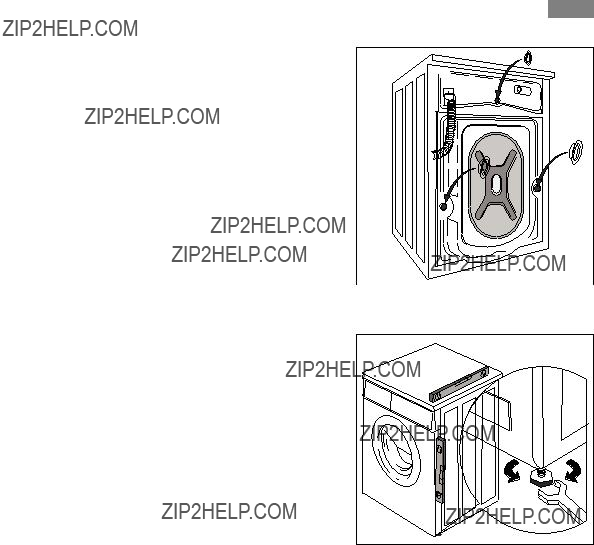
Installation 33
6. Fill the smaller upper hole and the two large ones with the corresponding plastic plug caps supplied in the bag containing the instruction booklet.
7. Connect the water inlet hose as described under the paragraph ??Water inlet??.
Positioning and levelling
Install the machine on a flat hard floor.
Make sure that air circulation around the machine
is not impeded by carpets, rugs etc. Before placing it on small tiles, apply a rubber coating.
Never try to correct any unevenness in the floor by putting pieces of wood, cardboard or similar
materials under the machine. If it is impossible to avoid positioning the machine next to a gas cooker or coalburning stove, an in-
sulating panel covered with aluminium foil on the
side facing the cooker or stove, must be inserted between the two appliances.
The machine must not be installed in rooms where the temperature can drop below 0??C. The water inlet hose and the drain hose must not be kinked.
Please ensure that when the appliance is installed, it is easily accessible for the engineer in the event of a breakdown.
Carefully level by screwing the adjustable feet in or out. Never place cardboard, wood or similar materials under the machine to compensate for any unevenness in the floor.
Water inlet
An inlet hose is supplied and can be found inside the machine drum.
This appliance must be connected to a cold water supply.
Do not use the hose from your previous machine to connect to the water supply.
34Installation
1.Open the porthole and extract the inlet hose.
2.Connect the hose with the angled con- nection to the machine.
Do not place the inlet hose downwards. Angle the hose to the left or right de- pending on the position of your water tap.
3.Set the hose correctly by loosening the ring nut. After positioning the inlet hose, be sure to tighten the ring nut again to prevent leaks.
4.Connect the hose to a tap with a 3/4??? thread. Always use the hose supplied with the appliance.
The inlet hose must not be lengthened. If it is too short and you do not wish to move the tap, you will have to purchase a new, longer hose specially designed for this type of use. Installation should comply with local water authority and building regulations require- ments. Check the minimum water pressure re- quired for safe operation of the appliance in the chapter "Technical Data".
Installation 35
Water-stop device
The inlet hose is provided with a water stop de- vice, which protects against damage caused by water leaks in the hose which could develop due to natural ageing of the hose. This fault is shown by a red sector in the window ??A??. Should this oc- cur, turn the water tap off and refer to your Serv- ice Centre to replace the hose.
A
Water drainage
The end of the drain hose can be positioned in three ways:
1.Hooked over the edge of a sink using the plastic hose guide supplied with the machine.
In this case, make sure the end cannot come unhooked when the machine is emptying.
This could be done by tying it to the tap with a piece of string or attaching it to the wall.
2. In a sink drain pipe branch. This branch must be above the trap so that the bend is at least 60 cm above the ground.
3. Directly into a drain pipe at a height
of not less than 60 cm and not more than 90 cm.
The end of the drain hose must always be ventilated, i.e. the inside diameter of the drain pipe must be larger than the outside diameter of the drain hose.
The drain hose must not be kinked.
36 Electrical connection
The drain hose may be extended to a maximum of 4 metres. An additional drain hose and joining piece is available from your local Service Centre.
ELECTRICAL CONNECTION
Information on the electrical connection is given on the rating plate on the inner edge of the appliance door.
Check that your domestic electrical installation can take the maximum load required, also taking into account any other appliances in use.
WARNING!
Connect the machine to an earthed socket.
WARNING!
The manufacturer does not accept any responsibility for damage or injury through failure to comply with the above safety precaution.
WARNING!
The power supply cable must be easily accessible after installing the machine.
WARNING!
Should the appliance power supply cable need to be replaced, this must be carried out by a Service Centre.
ENVIRONMENT CONCERNS
The symbol  on the product or on its packaging indicates that this product may not be treated as household waste. Instead it should be taken to the appropriate collection point for the recycling of electrical and electronic equipment. By ensuring this product is disposed of correctly, you will help prevent potential negative consequences for the environment and human health, which could otherwise be caused by inappropriate waste handling of this product. For more detailed information about recycling of this product, please contact your local council, your household waste disposal service or the shop where you purchased the product.
on the product or on its packaging indicates that this product may not be treated as household waste. Instead it should be taken to the appropriate collection point for the recycling of electrical and electronic equipment. By ensuring this product is disposed of correctly, you will help prevent potential negative consequences for the environment and human health, which could otherwise be caused by inappropriate waste handling of this product. For more detailed information about recycling of this product, please contact your local council, your household waste disposal service or the shop where you purchased the product.
37
Packaging materials
The materials marked with the symbol 
 are recyclable. >PE<=polyethylene
are recyclable. >PE<=polyethylene
>PS<=polystyrene
>PP<=polypropylene
This means that they can be recycled by disposing of them properly in appropriate collec- tion containers.
Ecological hints
To save water, energy and to help protect the environment, we recommend that you follow these tips:
???Normally soiled laundry may be washed without prewashing in order to save detergent, water and time (the environment is protected too!).
???The machine works more economically if it is fully loaded.
???With adequate pre-treatment, stains and limited soiling can be removed; the laundry can then be washed at a lower temperature.
???Measure out detergent according to the water hardness, the degree of soiling and the quantity of laundry being washed.
www.aeg-electrolux.com/shop
132940590-A-422010



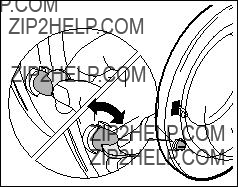
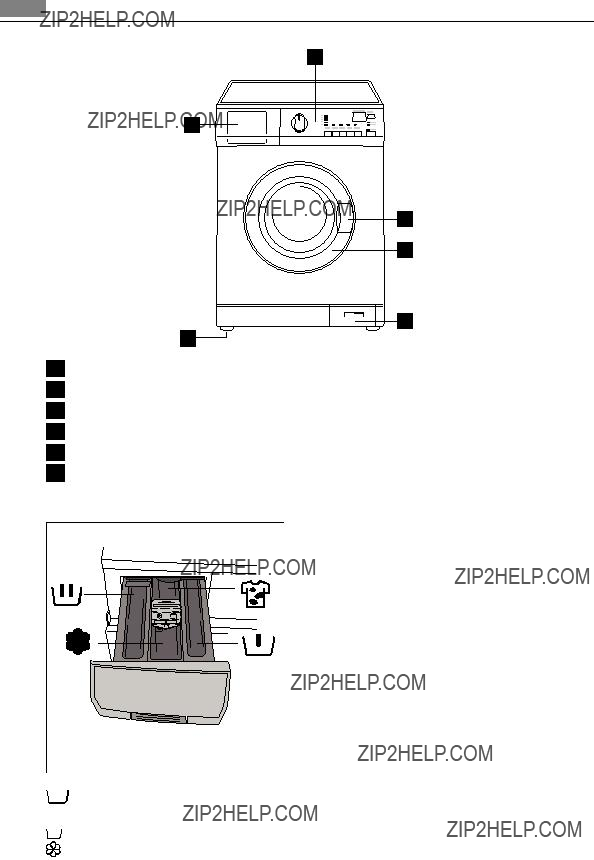
 Compartment for detergent used for
Compartment for detergent used for  Compartment for powder or liquid detergent used for
Compartment for powder or liquid detergent used for  Compartment for stain remover used for main wash with
Compartment for stain remover used for main wash with 
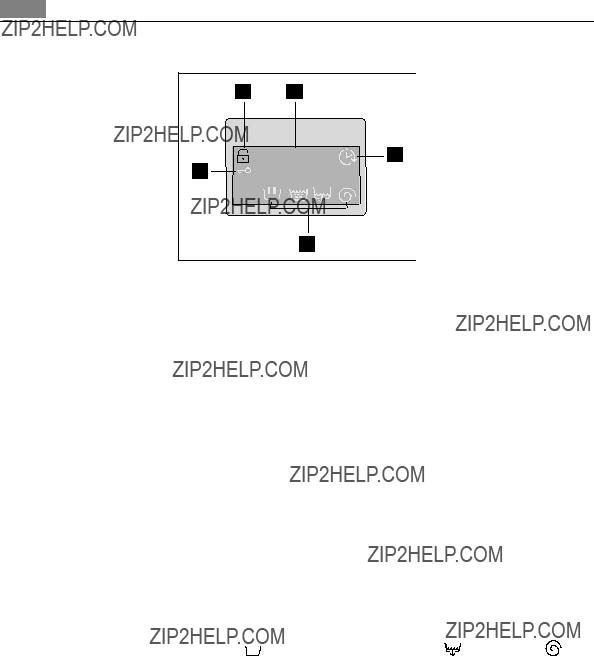
 is displayed, the symbol
is displayed, the symbol 
 = WASHING,
= WASHING,  = RINSING, = DRAINING, = SPINNING - symbols
= RINSING, = DRAINING, = SPINNING - symbols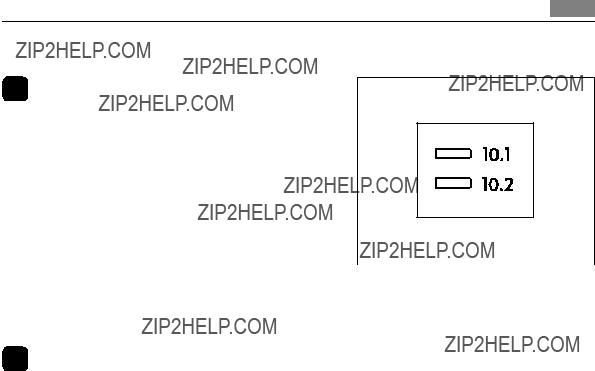
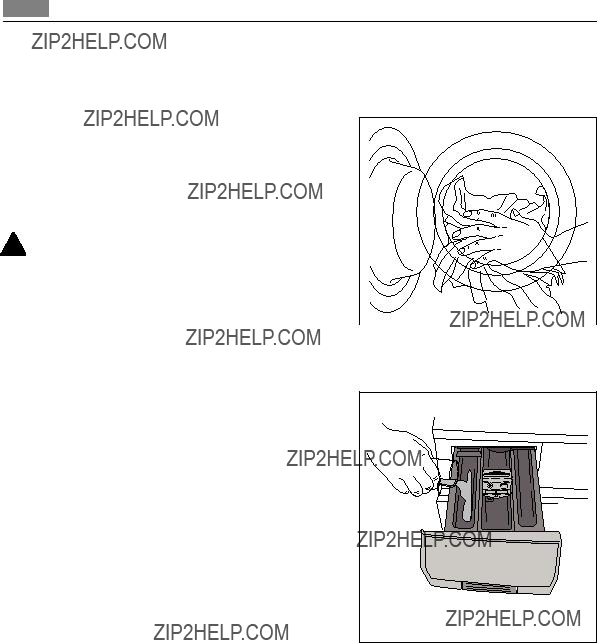
 and, if you wish to carry out the
and, if you wish to carry out the  .
. marked with an arrow.
marked with an arrow.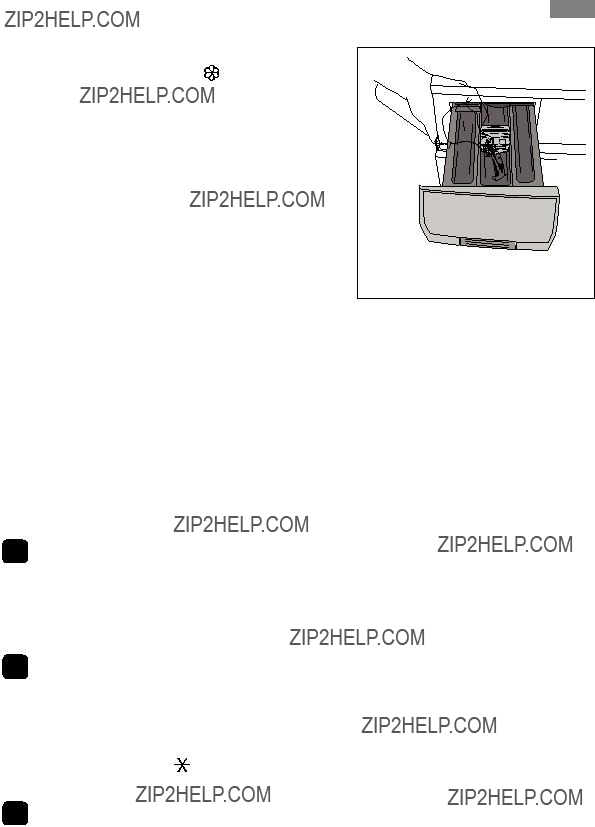
 the pro- gramme is reset and the machine is switched off.
the pro- gramme is reset and the machine is switched off. , to switch the machine off.
, to switch the machine off.
 marked with an arrow.
marked with an arrow.
 ??? is displayed;
??? is displayed;
 and then to the new programme position. Start the new programme by pressing the
and then to the new programme position. Start the new programme by pressing the  to cancel a programme which is running. Now you can select a new programme.
to cancel a programme which is running. Now you can select a new programme. . After a few minutes the door can be opened
. After a few minutes the door can be opened  will appear on the display. Some acoustic signals sound. The door can be opened. If a programme or an option that ends with water left in the tub has been selected, a blink- ing
will appear on the display. Some acoustic signals sound. The door can be opened. If a programme or an option that ends with water left in the tub has been selected, a blink- ing  will appear on the display, the pilot light of button
will appear on the display, the pilot light of button 
 to switch the machine off. Remove the laundry from the drum and carefully check that the drum is empty. If you do not intend to carry out another wash, close the water tap. Leave the door open to prevent the formation of mildew and unpleasant smells.
to switch the machine off. Remove the laundry from the drum and carefully check that the drum is empty. If you do not intend to carry out another wash, close the water tap. Leave the door open to prevent the formation of mildew and unpleasant smells.

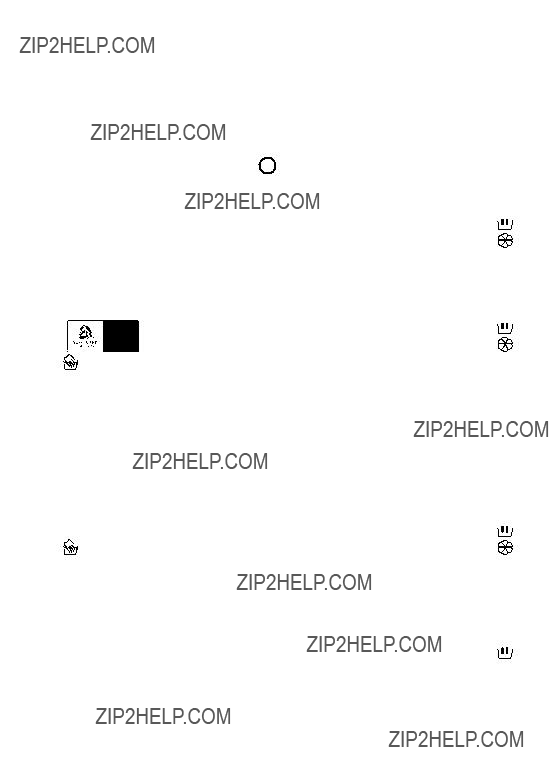


 = OFF
= OFF


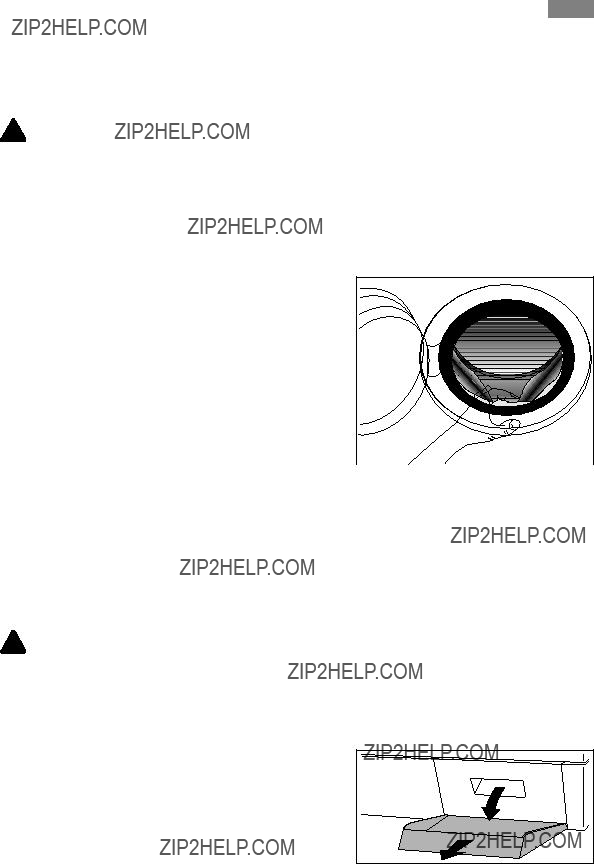
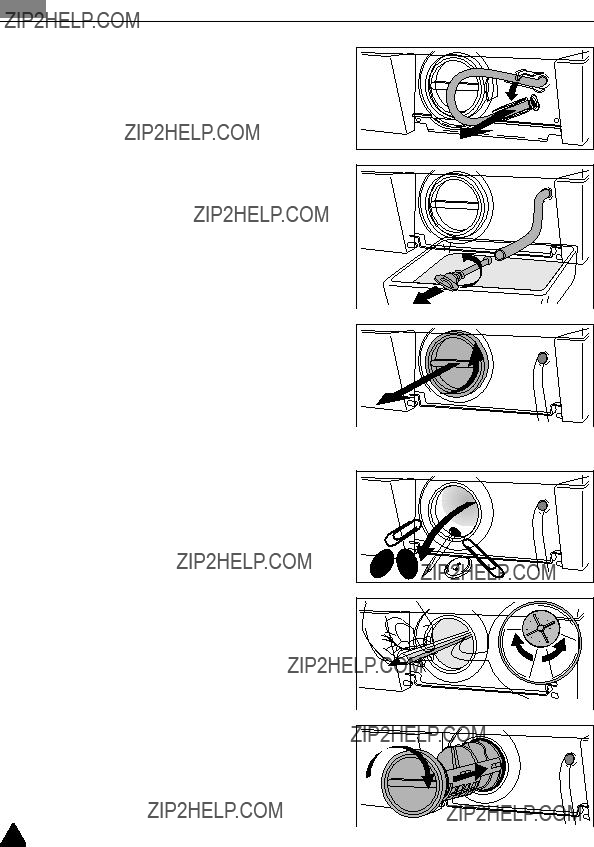



 : problem with the water supply
: problem with the water supply
 : problem with the water draining
: problem with the water draining


 :
: 

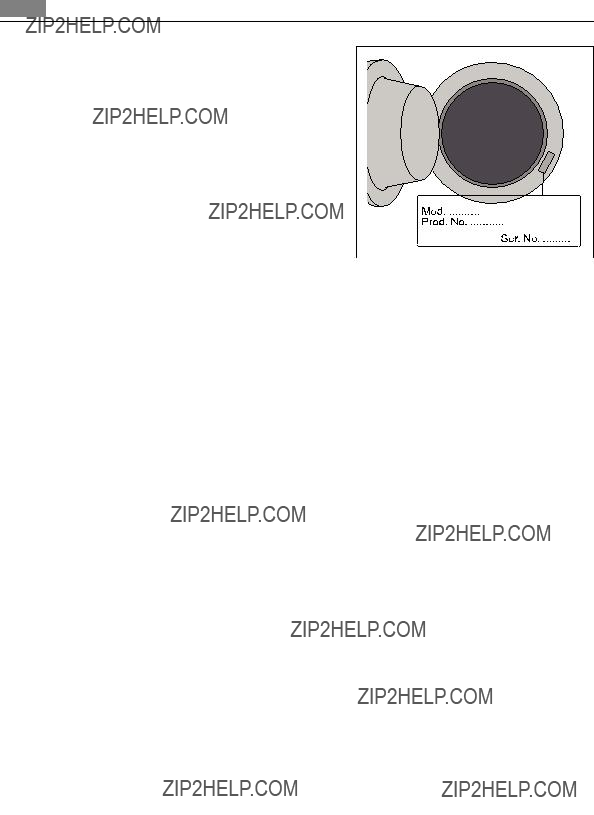
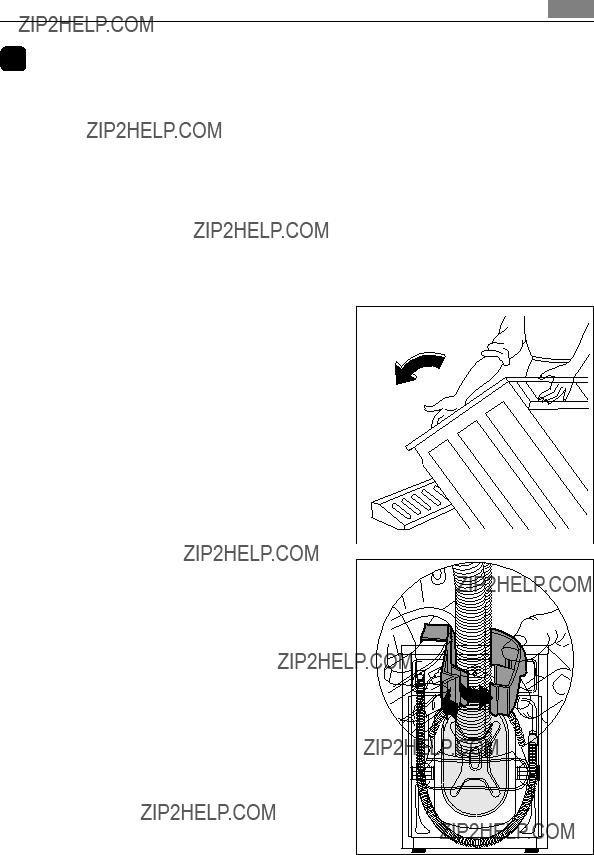
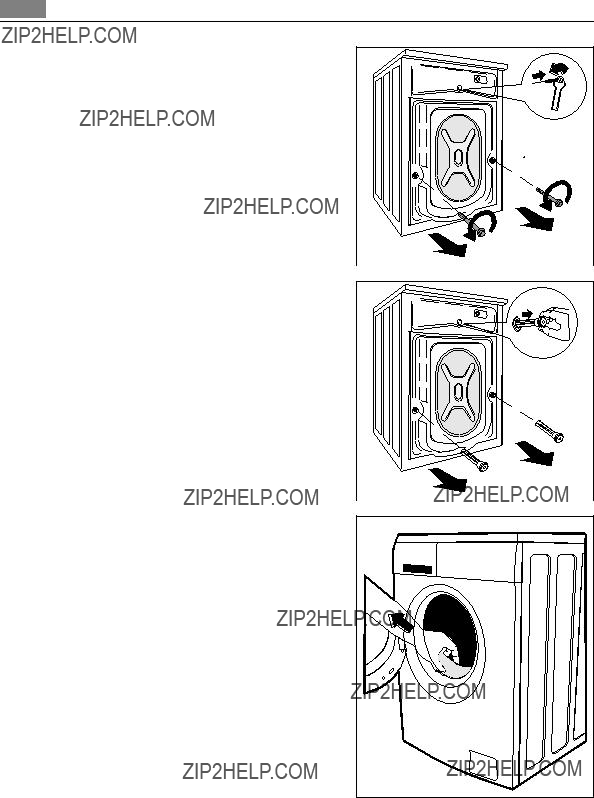

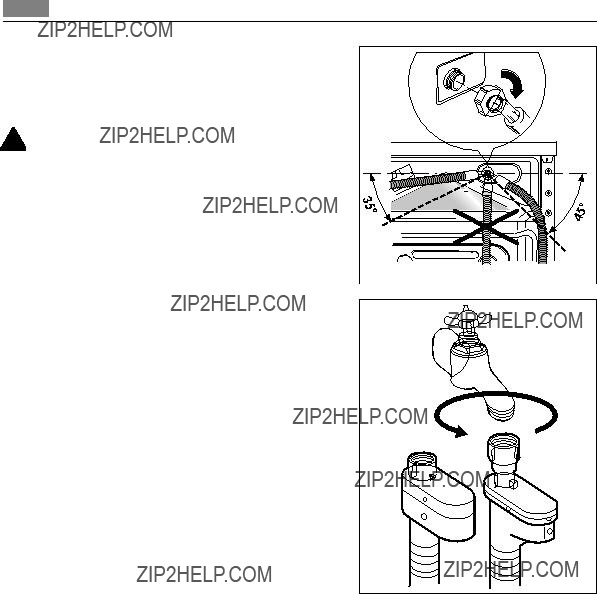
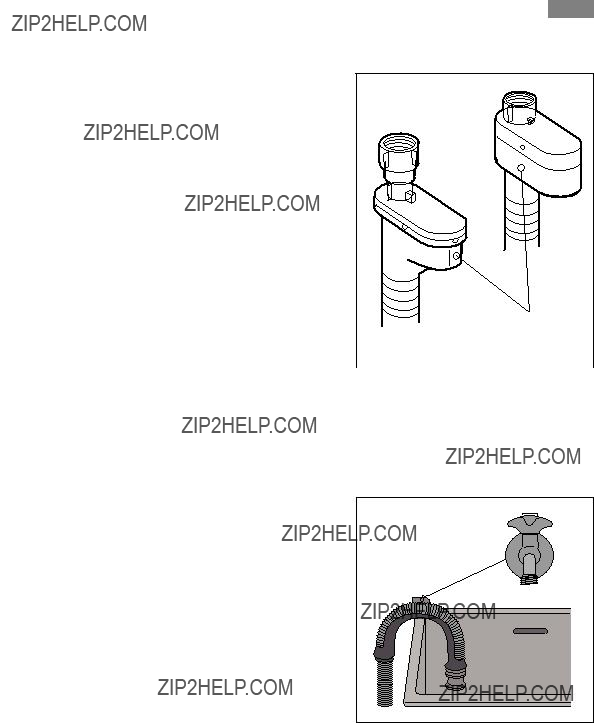
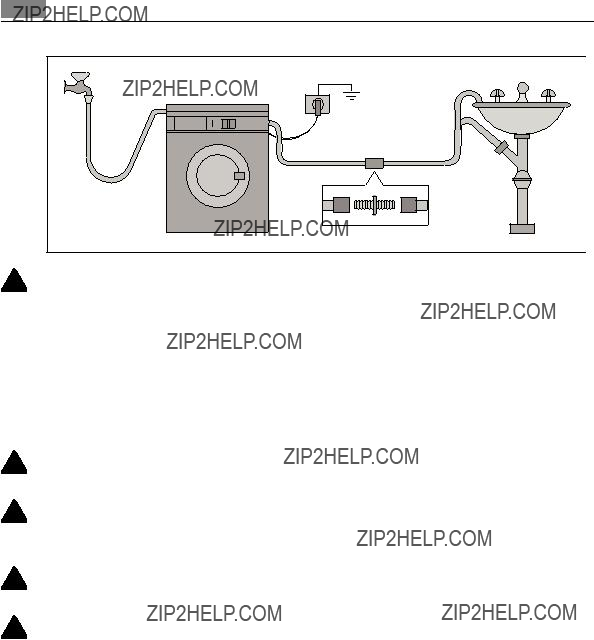
 on the product or on its packaging indicates that this product may not be treated as household waste. Instead it should be taken to the appropriate collection point for the recycling of electrical and electronic equipment. By ensuring this product is disposed of correctly, you will help prevent potential negative consequences for the environment and human health, which could otherwise be caused by inappropriate waste handling of this product. For more detailed information about recycling of this product, please contact your local council, your household waste disposal service or the shop where you purchased the product.
on the product or on its packaging indicates that this product may not be treated as household waste. Instead it should be taken to the appropriate collection point for the recycling of electrical and electronic equipment. By ensuring this product is disposed of correctly, you will help prevent potential negative consequences for the environment and human health, which could otherwise be caused by inappropriate waste handling of this product. For more detailed information about recycling of this product, please contact your local council, your household waste disposal service or the shop where you purchased the product.

 are recyclable. >PE<=polyethylene
are recyclable. >PE<=polyethylene

